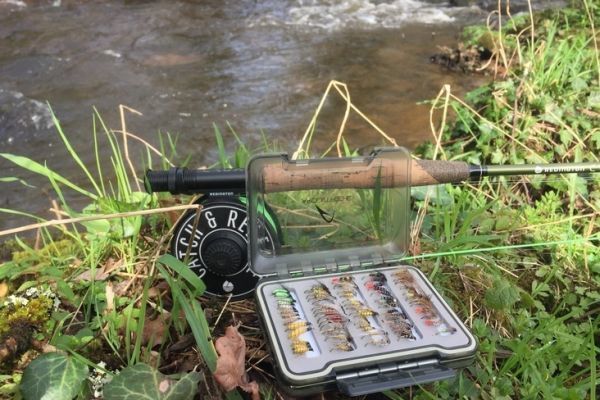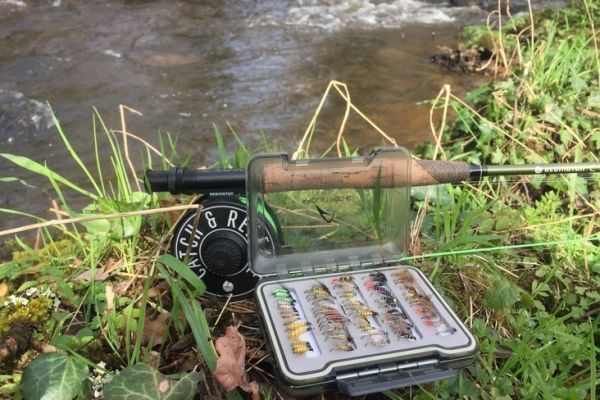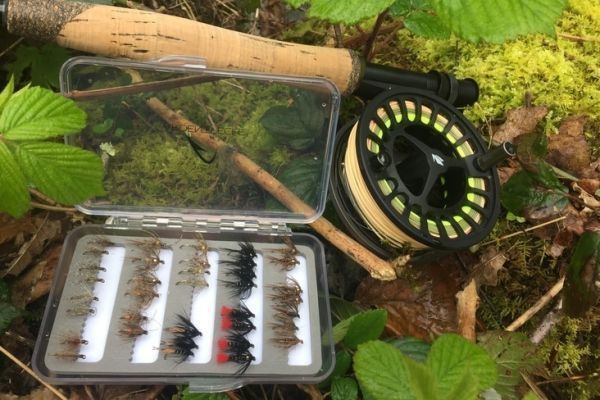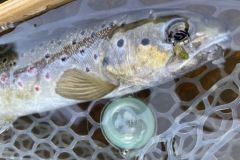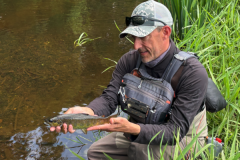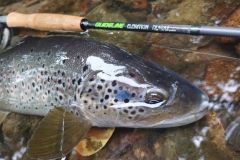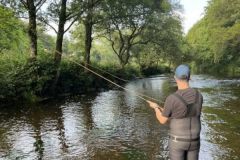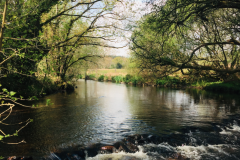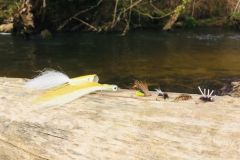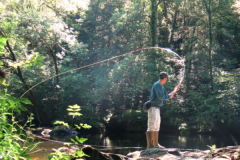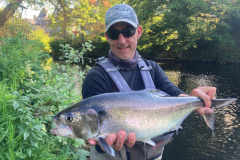Origin of drowned fly fishing
Although fly fishing was certainly invented long before that, the first writings on this practice date back to 200 years after Jesus Christ, disguised hooks covered with wool and rimmed with rooster feathers were already used to catch fish, which must have been trout according to the description.
Since then, fly fishing has certainly evolved, but drowned fishing has remained close to this first description.
The English have greatly contributed to the development of this technique for fishing the chalk-stream and the numerous lakes (or lochs). Even today, our drowned flies are based on British models, but have been locally modified to adapt to French waters.
In the countryside of France, peasant fishermen used to catch trout to improve their diet. Some even made it a secondary activity by selling their fish to earn some money or to barter. This still took place in France, a little less than a century ago.
This technique is called the drowned fly as opposed to dry fly fishing, where flies float on the surface to imitate hatching insects. The use of horsehair as a leader, at the time, made floating flies almost impossible. They were therefore moving underwater, hence the term "drowned".

How to fish with a drowned fly ?
The technique consists in moving 1 to 3 flies under the surface at different depths and water heights to imitate aquatic larvae. We prospect different corners of the river by casting downstream, that is to say by going downstream.
The leader is generally made up of a tip fly (the fly furthest from the angler), an intermediate fly and a jumper (the one closest to the surface).
These flies are usually not weighted, but the tippet is mounted with a thicker, dense body, often varnished, to be the "heaviest" and to submerge the fly train. Nowadays, some anglers, including myself, mount a bead on the head of the fly to add weight.
The tippet is the heaviest fly, which allows you to stretch the leader. The intermediate fly is often thinner than the tippet, lighter, and a little more bushy, and the jumper is an imitation between a dry fly or an emerger that will often be just below the surface.
These flies imitate different types and stages of larvae. The idea is to make them drift with the currents to "comb" the trout spots with three stages of flies and swimming heights.
Nowadays, most anglers use only one or two flies, rarely three. This is to avoid tangling.
To fish with a drowned fly, it is recommended to use an old floating WF line or an intermediate tip.
Personally, I use floating lures to which I add tips of different densities called polyleader or versileader. This allows me to adapt to the height of the water and the activity of the fish. The higher and colder the water, the closer to the bottom and the slower you fish. The lower and warmer the water, the closer you fish to the surface and in faster current veins.
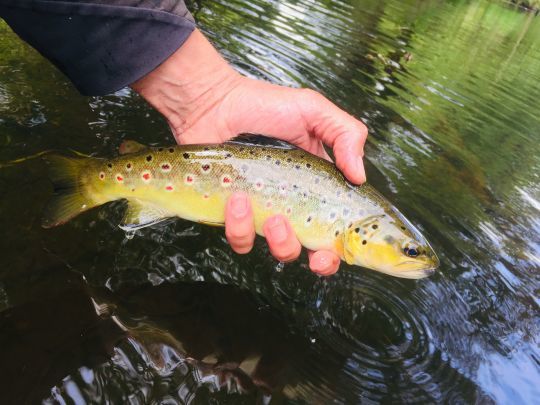
Animations or not?
Even though your fly train will "work" almost by itself in the current that will make your flies live, animations can be used to trigger touches.
Depending on the configuration of the fishing area, animation is sometimes useless, because the variation of the currents (speed and intensity) will make your flies fish.
However, on slower spots or on spots created by rocks, animating your flies can make the difference by attracting the attention of the fish, or creating reflex hits. This is called teasing. When well mastered, it often allows to catch more fish by adding more life to the flies at key moments.
The animations consist in pulling and releasing your flies to make them rise and fall, and to accelerate or slow down the drift. It is also possible to make small strips (short continuous shots) to once again modify the swim of your imitations. The fisherman can therefore make his flies live and work as he wishes and to his liking.
